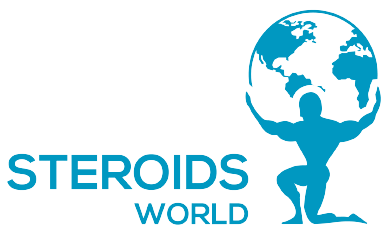Why buy Human Chorionic Gonadotrophin
Pregnant women produce a potent polypeptide hormone called human chorionic gonadotropin, or HCG.HCG was originally identified in the 1920s, the pharmaceutical company Organon began selling it as an extract under the brand name Pregynl. Giving HCG to a wide range of patients was said to have several benefits, some of which turned out to be absurd, while others were genuinely helpful. The following conditions were first treated with HCG:
-
- Froehlich’s Pathology
- The Cryptochedia
- Depression And Obesity
- Infertility In Females
- Bleeding In the Uterus
Chemical Formula:
C1105H1770N318O336S26
Action mechanism:
Early in pregnancy, a polypeptide hormone called human chorionic gonadotropin (HCG) is present in pregnant women. The hormone is produced in the placenta and plays a major role in the continuous synthesis of progesterone, a hormone that is necessary for pregnancy. Pregnancy tests also use the HCG hormone as their standard measuring instrument. A typical home pregnancy test can identify an increase in HCG levels following fertilisation. After that, the hormone will peak between weeks 8 and 12 of pregnancy and then progressively drop until delivery.
The single characteristic of HCG that stands out as being useful in therapeutic or performance contexts is its capacity to resemble the luteinizing hormone (LH). HCG, or exogenous LH, is the main gonadotropin, along with FSH (follicle-stimulating hormone), but a little basic. This is advantageous for the female patient since gonadotropins like LH, which are primarily responsible for stimulating the synthesis of natural testosterone, also induce conception. This is the main rationale behind its usage in many low testosterone therapy regimens, as well as the reason why some users of anabolic steroids will take it. In cases when natural LH production is low, the release of LH stimulates the testicles to create more testosterone.
Effects:
Nowadays, one of the main uses of HCG is as a diet supplement. The HCG diet has gained a lot of traction in Western medicine, but its overall efficacy is arguably the most contentious issue. Upon examining HCG’s impact on metabolism, we see that it lacks thyroid-stimulating properties, is not a beta-2 stimulant, does not reduce or inhibit hunger, and does not exhibit any characteristics or actions linked to a thermogenic or fat-burning agent. Though many doctors have claimed success with the HCG diet, there is a lot of criticism directed against the fasting component, since this cannot be considered a long-term, healthy practice in and of itself. As of right now, there isn’t enough proof to say that these patients’ weight reduction is due to the HCG diet; the identical fasting regimen would not result in weight loss without the HCG. Nonetheless, the discussion surrounding this diet will probably go on for a very long time.
PCT usage and on-cycle use are the two distinct categories in which the effects of HCG on anabolic steroid users may be classified. The usage of anabolic steroids suppresses the body’s natural synthesis of testosterone. Although it varies depending on the steroids being used and the overall dosages to some extent, the rate of suppression is usually substantial. When all anabolic steroid use is discontinued, the body will naturally start producing testosterone once more. This, however, presumes that there was no preceding low testosterone situation or significant HPTA damage brought on by incorrect anabolic steroid usage.
Side effects:
One of the hormones with the fewest adverse effects is HCG. Although they are exceedingly rare, adverse effects from using HCG are conceivable. It is not possible to have side effects that are frequently linked to traditional drugs, such as rashes, headaches, or gastrointestinal problems. The main adverse effects of HCG are expected to resemble those most frequently linked to elevated testosterone levels, primarily those that are estrogenic. This is understandable given that HCG can raise levels of testosterone by stimulating its synthesis.
Storage:
At temperatures ranging from sixty-eight Fahrenheit to seventy-seven Fahrenheit, keep this drug away from heat, moisture, and light. Have all medications out of the range of youngsters.
![]()
Active half-life
( 8.5 DAYS )
Dosage
( 300-500MG / WEEKLY )
Acne
( YES )
WATER RETENTION
( YES )
HBR
( YES )
Hepatoxity
( YES )
Aromatization
( YES )
Detection time in body
( 40 DAYS )
External Links
Human Chorionic Gonadotropin (HCG) PCT – Steroid Cycles
Indications for the use of human chorionic gonadotropic
















